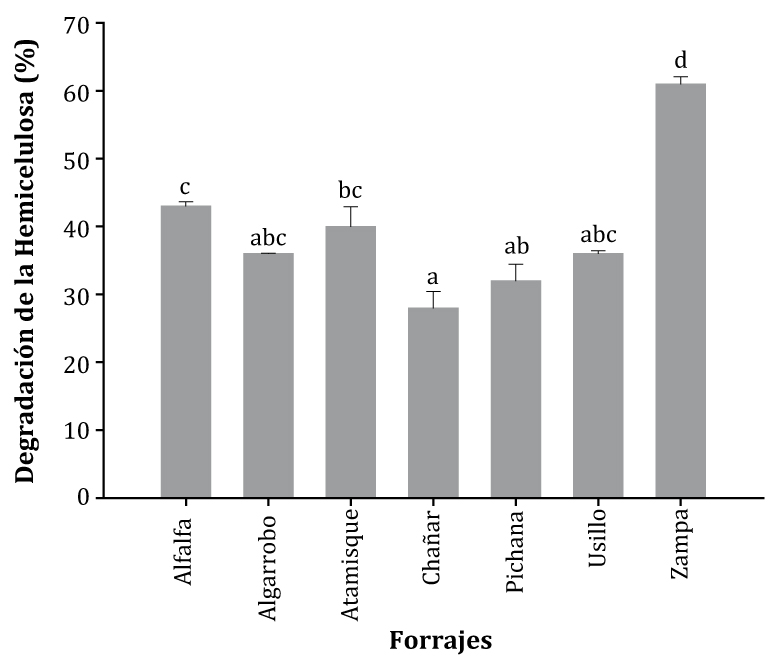Degradation and utilization of hemicellulose from species forage by Pseudobutyrivibrio ruminis and Pseudobutyrivibrio xylanivorans
Keywords:
hemicellulose, bacteria, rumen, goatsAbstract
This study was performed to determine the degradation and utilization of hemicellulose from intact forages by two strains (P. xylanivorans 2 and P. ruminis 153) isolated from rumen of Creole goats. Fermentations by pure culture were run to completion by using alfalfa hay and native forages selected by goats grazing. Degradation was defined as the solubilization of 80% ethanol-insoluble pentose, whereas utilization was defined as a loss in total pentose. The nutritional components measured from intact forages were cutin, neutral detergent fiber, acid detergent fiber, acid detergent lignin, hemicellulose, cellulose, crude protein and starch. A. lampa showed the maximum degradation value and utilization of hemicellulose, and M. ephedroides and G. decorticans were the native forage species with the smallest value of degradation, in comparison with alfalfa hay. The correlation coefficient between acid detergent lignin and percentage of degradation and utilization of hemicellulose, suggests that lignin affects hemicellulolytic activity of P. xylanivorans. These results provide a framework to try to modify the activity of ruminal hemicellulolytic environment by incorporating P. xylanivorans as probiotic strain.

Downloads
Published
Issue
Section
License
Aquellos autores/as que tengan publicaciones con esta revista, aceptan las Políticas Editoriales.


